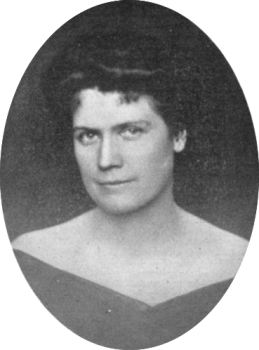One hundred years ago this week, Grace Kingsley reported that thirty-eight film companies were at work in Universal City, and
“as a consequence art just oozes from the city walls. Every style of picture is being produced, from the psychological brow drama of Hobart Henley and Rupert Julian to…Eddie Lyons and his trick seltzer bottle.”
The Henley film, which he planned to write, direct, and star in was about infantile paralysis and “is said to pack a thrilling punch.” Perhaps it was too thrilling: there’s no record that such a film got made but Henley had a decent career as a director that lasted until 1934. Rupert Julian had been seen carrying around Robert Davis’ novel We Are French that he wanted to make in to a film. He hoped to spend twenty thousand dollars which would pay for the destruction of a French village and desert scenes with 300 Bedouins and 100 camels. This film did get made. Retitled The Bugler of Algiers it was released in November, but none of the summaries mentioned camels or Bedouins. It’s a lost film. Julian also continued to direct until sound came. There’s a web page devoted to him here. Finally, Eddie Lyons did keep making his short comedies like clockwork, one per week, until 1920.

Her favorite film of the week was The Payment: “as a story of tense dramatic values, the picture has hardly ever been equaled.” She summarized it as the story of a love triangle becoming a quadrangle that “is unflinchingly worked out to a bitter and logical conclusion.” The film (as described in Motography) sounds downright horrifying now: a mill worker’s pretty daughter (Bessie Barriscale) wants to be an artist and a nasty old married letch (Charles Miller) offers to pay for her studies in exchange for sex. Lacking options, she accepts. Years pass, she becomes famous and she meets and falls in love with his brother-in-law Dick (William Desmond). The old letch convinces her that a soiled dove like her couldn’t possibly marry his relative, so she refuses Dick’s proposal; her abject misery is the payment for her ambitions. Yikes! The Payment is a lost film.

She thought that Douglas Fairbanks’ new film The Half-Breed was a “thoroughly satisfactory and rounded production” (and said of Mr. Fairbanks “physically he presents a striking picture,” which is a very polite way of putting it.) She also mentioned that Theda Bara had one of her best roles ever as the Foreign Legion camp follower Cigarette in Under Two Flags.
Only Chaplin could replace Chaplin at the Garrick Theater. The Vagabond was to finally end its four-week run with a special one a.m. matinee of his next film, One O’Clock. Kingsley thought it would be a treat for milkmen.

She had two stories about tough actresses. Four-year-old Marie Osborne, playing Little Mary Sunshine, was “a dead game sport.” While filming, she fell into a lily pond. The whole company fussed over her, but she said “Oh, stop chattering and go ahead and shoot!” Osborne’s grit undoubtedly helped her throughout her long career in film. After aging out of the child parts she took a break for school, then became an extra and stand-in in 1934. There’s no record that she was the basis for Joan Blondell’s character in The Stand-In (1937), but the stories were awfully similar. However, instead of ending up with an accountant and quitting she joined the wardrobe department and worked until 1977. She died in 2010, age 99.

The second story was about a dainty ingénue:
Claire Alexander is working in an unusually strenuous comedy out of the Horsely studios. And in this hot weather, too. She came into her dressing-room yesterday with a splitting headache and covered with black and blue spots. She had been nipped by a lion, carried head downward for several minutes, had fallen off a bluff and tried to milk a cow outside the cow’s office hours. ‘What is the picture?’ a visitor asked. ‘I don’t’ know,’ answered Miss Alexander, rubbing arnica on her arms. ‘They call it comedy!’
Despite it all, she wasn’t a quitter and she kept making Cub Comedies every week until late 1917. According to her Film Daily obituary, she retired from acting in 1925 and died of pneumonia in 1927.

Kinglsey’s admiring review of the Kosloff troupe reminded me how diverse vaudeville acts were. She wrote “Theodore Kosloff achieves one of the conquering successes of the Orpheum season in his ballet production of magic beauty and old world grace and majesty. The act was most artistically varied, from a Russian peasant dance to several fine little ballet conceptions.” She liked the other acts, too: Kramer and Morton provided a “crisp comedy turn” with “good jigs and clogs,” Consul and Betty, an educated chimp act provided “high-brow monkey-shines” and Jack McLallen and May Carson “are still the championship skaters.” What an evening’s entertainment! Later she reported that Kosloff’s troupe would be staying at the Orpheum for two more weeks, because they were such a sensation.
There was an update to last week’s story about Dora Mae Howe and her chocolates: at the Monday show when she opened the box, there was no candy, only an old Yale lock. She knew who did it, and her revenge was swift. During the Tuesday show, Paul Harvey found no cigarettes in his case, only rope.























